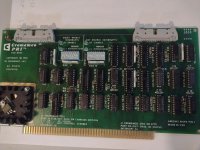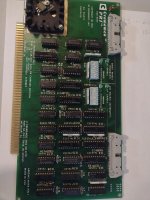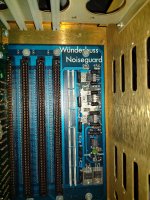Endersending
Experienced Member
I have a Cromemco 4FDC controller, ZPU, and I am trying to figure out how to get Kermit working with the TU-ART board. I followed the instructions here and Kermit is running on CDOS 2.58 but trying to SET PORT in Kermit says that it is not implemented.
I have read a little about drivers but between the TUART manual and CDOS manual I see nothing about the TUART needing drivers or how to set it up with CDOS.
Do I need to build drivers as per the CDOS manual?
I have the TUART card plugged in and the serial addresses set to 20H and 80H so to not interfere with anything else on the system. I don't think CDOS knows the card is there.
Thanks for any help in advance.
I have read a little about drivers but between the TUART manual and CDOS manual I see nothing about the TUART needing drivers or how to set it up with CDOS.
Do I need to build drivers as per the CDOS manual?
I have the TUART card plugged in and the serial addresses set to 20H and 80H so to not interfere with anything else on the system. I don't think CDOS knows the card is there.
Thanks for any help in advance.



